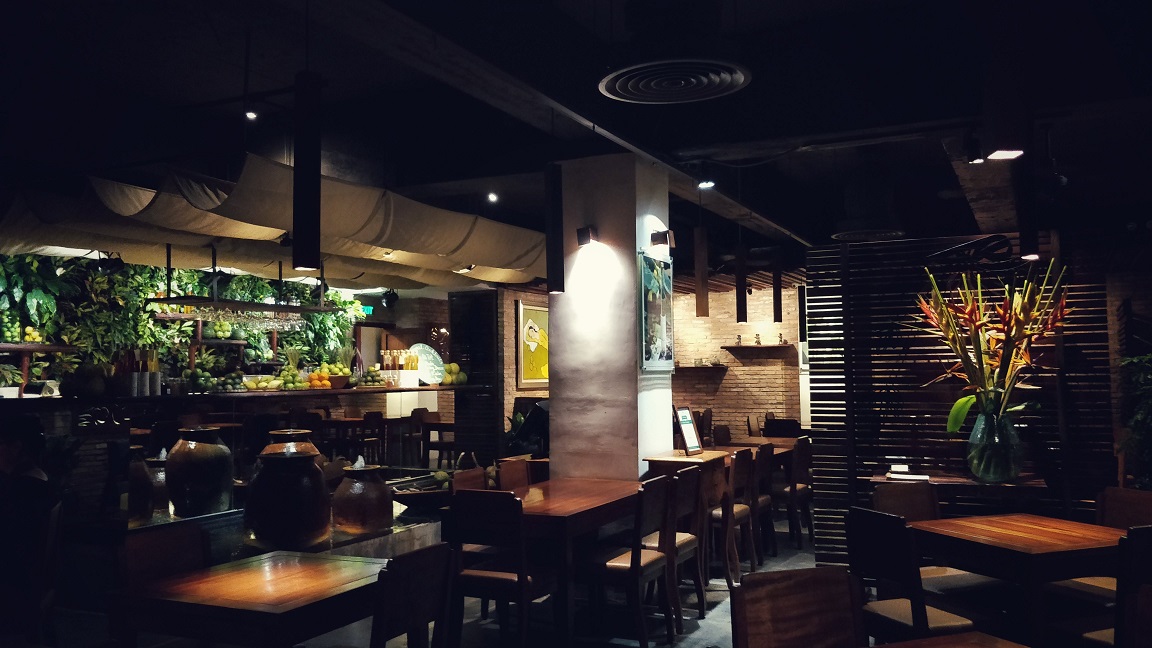Asian Fusion Restaurant: An Unique Dining Experience in the Heart of Islamabad
Asian Fusion Restaurant: An Unique Dining Experience in the Heart of Islamabad
Blog Article
Savor Authentic Asian Food With a Pan-Asian Twist for a Cooking Adventure
Beginning on a cooking journey through genuine Eastern food, boosted with a Pan-Asian spin, uses an one-of-a-kind possibility to discover the abundant tapestry of tastes that define the area's varied culinary practices. As you consider these attracting dishes, take into consideration the social narratives and historical impacts that shape them, each bite offering a tale waiting to be found. Romantic restaurants Islamabad.

Discovering Pan-Asian Tastes
In the realm of global gastronomy, Pan-Asian cuisine stands out for its impressive diversity and the unified interplay of tastes from different Eastern cultures. This cooking method commemorates the distinct active ingredients and rich traditions found throughout the continent, developing a tapestry of preferences that is both fascinating and rewarding. Secret to Pan-Asian food is its ability to stabilize different flavors-- pleasant, salted, spicy, and sour-- while highlighting the quality and quality of each component.
From the umami-rich soy sauce of Japan to the fiery chili peppers of Thailand, Pan-Asian cuisine uses an extensive palette of flavors. These aspects are typically integrated in inventive means, improving meals with layers of intricacy. As an example, using aromatic natural herbs such as lemongrass and cilantro, common in Vietnamese and Thai food, adds a rejuvenating illumination to recipes, while the unification of coconut milk provides a creamy, abundant structure.
The emphasis on fresh produce and aromatic flavors makes sure that each dish is not only a banquet for the taste but also for the detects. Pan-Asian cuisine welcomes restaurants to begin on a culinary journey, exploring the vast and varied landscapes of Oriental gastronomy with every bite.
Combination Recipes to Try
While Pan-Asian food is commemorated for its typical tastes, the contemporary cooking landscape is increasingly welcoming fusion dishes that blend these timeless elements with impacts from various other areas. This innovative technique not just honors the abundant heritage of Eastern cookeries however likewise presents novel taste experiences that interest modern tastes buds.
An archetype of such a fusion meal is the Korean-Mexican taco, where marinaded bulgogi beef is wrapped in a cozy tortilla, covered with kimchi and a hot gochujang-infused salsa. This combination marries the strong, mouthwatering tastes of Korea with the dynamic, fresh components of Mexican food. Likewise, sushi burritos have gotten popularity, amalgamating the delicate artistry of Japanese sushi with the hearty, hand-held convenience of a burrito, usually including combination active ingredients like tempura shrimp and avocado with a drizzle of wasabi mayo.
Another significant dish is Thai curry ramen, which instills the velvety, aromatic flavors of Thai curry right into the soothing brew of traditional Japanese ramen, creating a harmonious blend that entices the detects. These blend recipes extend beyond simple novelty; they represent a cooking discussion in between societies, urging exploration and development on the planet of Pan-Asian cuisine.
Vital Active Ingredients and Seasonings
To really appreciate Pan-Asian food, one need to comprehend the vital components and flavors that form its structure. This varied culinary design attracts from a rich tapestry of Eastern practices, utilizing a harmonious mix of tastes and structures.
Aromatic elements are pivotal, with lemongrass, garlic, and ginger being ubiquitous across numerous Pan-Asian recipes. These ingredients give an aromatic base that enhances the intricacy of flavors. Spices such as celebrity anise, cardamom, and cinnamon present warmth and personality, resembling influences from regions like China and India.

Food Preparation Techniques and Tips
Mastering the art of Pan-Asian cuisine calls for familiarity with its distinct food preparation strategies, each contributing to the lively tapestry of tastes this cooking custom is commemorated for. Central to these techniques is the stir-fry, a fast cooking strategy that maintains the nutritional stability and dazzling shades of components. Using a frying pan, the stir-fry technique permits for even heat circulation, crucial for accomplishing the characteristic appearance and taste equilibrium of Pan-Asian meals.
An additional basic strategy is steaming, specifically widespread in Chinese food. This mild approach keeps the all-natural tastes and nutrients of active ingredients, making it excellent for fish and shellfish and veggies. Dumplings, a precious staple, typically benefit from steaming, resulting in soft, succulent textures.
Grilling, also essential, passes on smoky midsts to recipes such as Oriental bulgogi or Japanese yakitori (asian restaurant isb). This technique usually entails marinading ingredients, permitting tastes to permeate deeply prior to food preparation over an open flame or hot plate
Lastly, understanding the art of stabilizing flavors-- sweet, sour, salted, bitter, and umami-- is important. Correctly layering these elements can raise a dish from ordinary to amazing, using a complicated and satisfying cooking experience that symbolizes the essence of Pan-Asian food.
Dining Experiences Worldwide
Across the world, Pan-Asian cuisine offers an exceptional eating experience, commemorated for its abundant tapestry of flavors and vibrant presentations. This cooking phenomenon has actually gone beyond social boundaries, recording the hearts and tastes of food lovers worldwide. In multicultural cities like New you could try this out York, London, and Sydney, Pan-Asian dining establishments work as melting pots where cooking practices from Thailand, Japan, China, and past assemble, giving restaurants with an eclectic mix of dishes that highlight the area's variety.
The international charm of Pan-Asian food exists in its capability to provide both authenticity and technology. Chefs masterfully marry traditional ingredients such as lemongrass, soy sauce, and miso with contemporary techniques, causing meals that are both acquainted and refreshingly new. This combination permits restaurants to begin on a culinary journey that values heritage while embracing modernity.
Furthermore, eating experiences are boosted via thoughtfully created atmospheres that show the values of Pan-Asian appearances. From minimal Japanese-inspired insides to dynamic Thai-themed rooms, each dining establishment provides an unique setting that enhances the cooking offerings. As an outcome, patrons are not just eating a dish yet partaking in a cultural experience, making Pan-Asian eating an absolutely international sensation.
Conclusion
The expedition of Pan-Asian cuisine supplies an extensive understanding of the detailed interaction of tastes and cooking customs across Asia. By welcoming find more information fusion meals such as Thai curry ramen and sushi burritos, the cooking journey not just highlights the flexibility of typical components yet also showcases innovative modern-day methods. This gastronomic journey, enhanced by necessary spices and cooking approaches, gives a special opportunity to appreciate the multiculturalism and cooking artistry that specify Pan-Asian food on a global scale.
Embarking on a culinary trip through genuine Oriental food, boosted with a Pan-Asian twist, uses a special possibility to check out the rich tapestry of flavors that define the area's varied cooking practices.In the realm of worldwide gastronomy, Pan-Asian food stands out for its exceptional variety and the unified interaction of tastes from numerous Asian societies. Key to Pan-Asian cuisine is its ability to balance contrasting flavors-- sweet, salty, spicy, and sour-- while highlighting the quality and high quality of each component.

Report this page